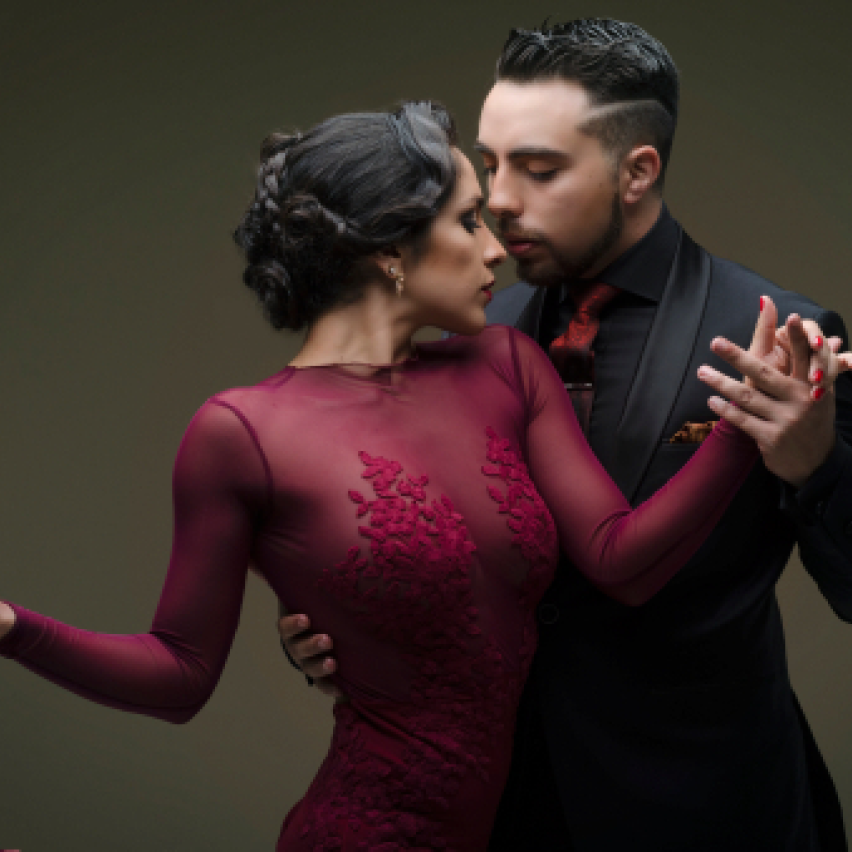MEET OUR TEAM OF JUDGES
ELEVATE YOUR DANCE,
EMBRACE THE COMPETITION
SCTC is an exciting international Argentine tango competition open to everyone, regardless of skill level or residency. Anyone (amateur or professional) from any country can compete. Get ready to dance, watch, and experience the magic of SCTC!
WHAT YOU NEED TO KNOW
JUDGING
Our expert panel of judges will evaluate competitors’ performances, ensuring a fair and competitive environment.
SPECTATOR-FRIENDLY
All competition rounds are open to spectators, so you can cheer on your favorites.
SOCIAL CATEGORIES
Social categories will feature multiple couples on the floor at the same time, dancing in improvised movements to random music.
STAGE CATEGORIES
Stage categories will feature one couple (or one stage group) at a time dancing in choreography to pre-selected music.
SCORING
Competitors are scored by the “point system” similar to Tango World Championship. For more info – see video here.
DATES
Mark your calendars for the SCTC, taking place from Thursday, March 26th to Sunday, March 29th.
GRAND FINALE
FINAL ROUNDS on Sunday, March 29th, featuring the top finalists and prize announcements. (GROUP ESCENARIO will compete exclusively on this day.)
COMPETITION SCHEDULE
This information will be released after the registration deadline on March 10th, 2026.
PRO/AM & AM/AM RULES
PROFESSIONAL DANCER
Dancers are considered PROFESSIONAL if they are earning or used to earn any income from tango dancing, teaching, and/or performing.
AMATEUR DANCER
Dancers are considered AMATEUR if they are NOT earning or used to earn any income from tango dancing, teaching and/or performing.
Note: if they assist, practice, and/or perform with professionals, they no longer qualify as amateurs.
PRO/AM COUPLES
Consists of a partnership between a professional and an amateur student. They cannot be regular practice and/or performing partners. Note: The official scoring reflects the couple as a whole, and not just the amateur.
AM/AM COUPLES
Consists of two amateur dancers partnering for competition. Neither dancer in the couple can be earning income either in the present or in the past from teaching or performing.
SCTC 2026 Competition Supervisor reserves the right to disqualify a couple that does not meet these requirements.
COMPETITION CATEGORIES
OPEN
CATEGORIES
(Am/Am, Pro/Am, Pro/Pro)
Tango de Pista
Escenario
Vals
Milonga
Jack & Jill
Group Escenario
PRO/AM
CATEGORIES
Tango de Pista
amateur <55
Tango de Pista
amateur 55+
AM/AM
CATEGORIES
Tango de Pista
Tango de Pista 55+
(up to 15 years age difference)
COMPETITION RULES
Social Categories
The social competition categories are danced IMPROVISED just as you would in a traditional milonga setting with extra emphasis on elegance, connection, technique, musicality, and style. Social categories are danced each day in groups to 3 different songs (per group, per category). Competitors are encouraged to dance as “naturally” as they can in respect to the traditional tango style. Judges will give extra attention to each couple’s posture, embrace, connection, elegance, musicality, walking, turns, and style.
There must be 10 registered couples minimum to guarantee cash prizes in each category, except for Group Escenario.
Tango de Pista
Tango de Pista is rooted in the tradition of social dance, where improvisation, the embrace, and the connection between partners are of utmost importance.
Couples’ Circulation Guidelines:
Couples must continuously move counterclockwise around the dance floor, as in a traditional milonga, avoiding any prolonged pauses or backward steps. A couple may take one or two small backward steps, provided they remain within their own space and do not disrupt the flow.
Respect for personal and shared space is essential. Remaining in the same spot for more than two phrases, thereby obstructing circulation, may result in a lower score. If a couple causes a complete blockage and prevents others from progressing, judges may decide to restart the round with a new tango.
Once the embrace is formed, it must be maintained throughout the music. For the embrace to be considered valid, one partner’s body must remain within the other’s embrace at all times. While brief flexibility is allowed for specific figures, it should not be sustained throughout the dance.
All movements and figures must remain within the couple’s own space to avoid interfering with others. The leader may guide the follower to the right or left but should not lead backward steps that affect overall circulation. It is not required to break the embrace between tangos.
Evaluation Criteria:
Couples may perform commonly accepted social tango figures—such as barridas, sacadas al piso, enrosques, ganchos, boleos, and embellishments—provided they remain within their own space and do not obstruct other dancers.
Stage Tango elements, including jumps, lifts, or any movement where both feet leave the ground, are strictly prohibited.
Judges will evaluate the couple’s interpretation across various tango styles, emphasizing musicality, elegance in walking, connection between partners, and individual expression. The ability to adapt dynamics and tempo in response to the music will also be a key component of the score.
PRO/AM & AM/AM
AM/AM Tango de Pista: No age requirement.
AM/AM Tango de Pista 55+: the partner can be at most 15 years younger or older.
PRO/AM Tango de Pista 55+: the amateur must be 55 years old or older.
PRO/AM Tango de Pista <55: the amateur must be under 55 years old.
ID REQUIREMENT: For age specific categories (PRO/AM <55, PRO/AM 55+, AM/AM 55+), All amateurs MUST submit ID via email after completing registration. Send photo to ([email protected]) for age verification.
SCTC 2026 Competition Supervisor reserves the right to disqualify a couple that does not meet these requirements.
Jack & Jill
No Partner Required: Participants will be judged individually, not as couples. Anyone may choose to compete as either a leader or a follower, but not both.
Three Rotations per Round: Each round consists of three songs, danced with a different randomly assigned partner each time.
Scoring: Judges will use a point-based system to evaluate each dancer’s connection, musicality, technique, and style. This category emphasizes freestyle expression within social tango parameters.
Escenario (Stage)
Escenario categories feature choreographed performances presented in a traditional stage format, emphasizing aesthetic and artistic expression. Each couple or team performs choreography to music of their choice, one at a time. Competitors are encouraged to use the full stage and adopt a more expressive, theatrical style.
Judges will evaluate performances based on:
-
Artistic expression
-
Musical interpretation
-
Technical difficulty and execution
-
Synchronization
Performance Requirements
-
Duration: Each performance must not exceed four (4) minutes.
-
Music: Competitors may select their own song (maximum 4 minutes).
-
Choreography Issues: If a problem occurs, couples must decide whether to continue; the judging panel will assess how gracefully the issue is handled. Performances may not be repeated for artistic reasons.
-
Technical Problems: In the event of a technical issue, the organization and jury may authorize a repeat performance at the end of the scheduled time slot.
Evaluation Criteria
Competitors may present their artistic interpretation of Argentine Tango, incorporating both traditional and contemporary elements.
-
Choreography must include traditional tango movements such as ochos, sacadas, boleos, walks, spins, and the milonguero embrace.
-
The embrace may be broken, and elements from other dance disciplines may be used when artistically justified.
-
Aerial or non-tango movements may not exceed one-third of the total performance.
-
Couples should utilize the entire stage throughout their choreography.
Additional Guidelines
-
Costumes: Attire may be considered as part of the judging process.
-
Mistakes: Competitors are expected to continue dancing through mistakes; restarts are not permitted.
-
Technical Issues: If technical difficulties occur, competitors may be permitted to perform again.
Group Escenario (Stage)
Escenario Group Category Guidelines
To qualify as a competition and be eligible for prizes, the Escenario Group category must have at least two registered groups. Cash prize increases considerably with more group entries. If fewer than two groups register, the category will be presented as a showcase only.
Category Description
The Escenario competition features choreographed performances in a traditional stage format, emphasizing artistic and aesthetic expression. Each performance—by a couple or team—presents choreography to music of their choice. Competitors are encouraged to use the full stage, dress expressively, and highlight creativity and showmanship.
Judging Criteria
Performances will be evaluated on:
-
Artistic expression
-
Musical interpretation
-
Technical difficulty and execution
-
Synchronization
Group Performance Evaluation
The same criteria as the Escenario (Stage) category apply, adapted for group performance.
SCTC is organized by Yuli B, who oversees the smooth operation of the competition, ensures compliance with the terms and conditions of participation, promotes the event, and manages the awarding of prizes. Yuli B is committed to maintaining impartiality and has no influence over the judging panel’s evaluation or decisions.





